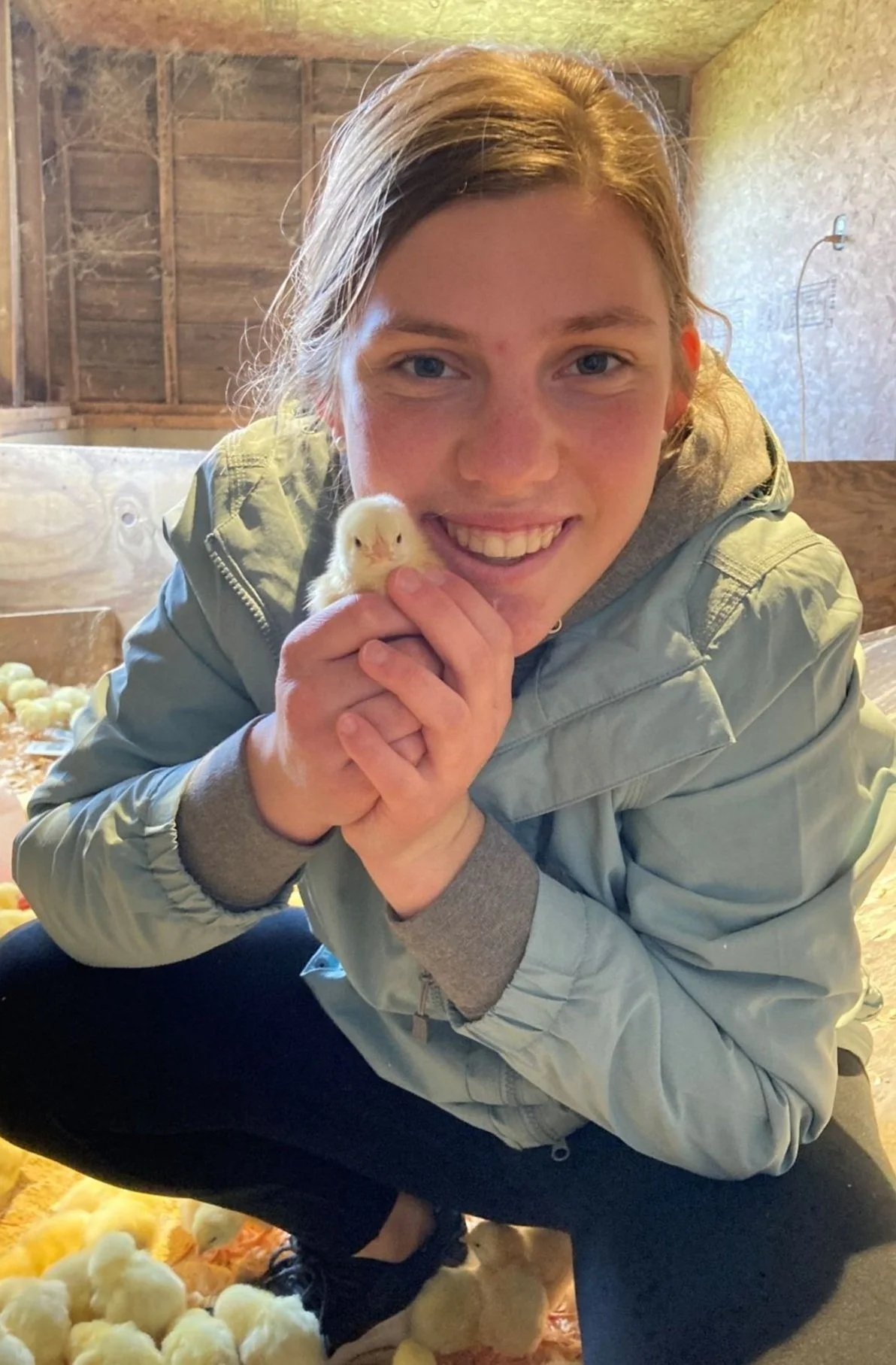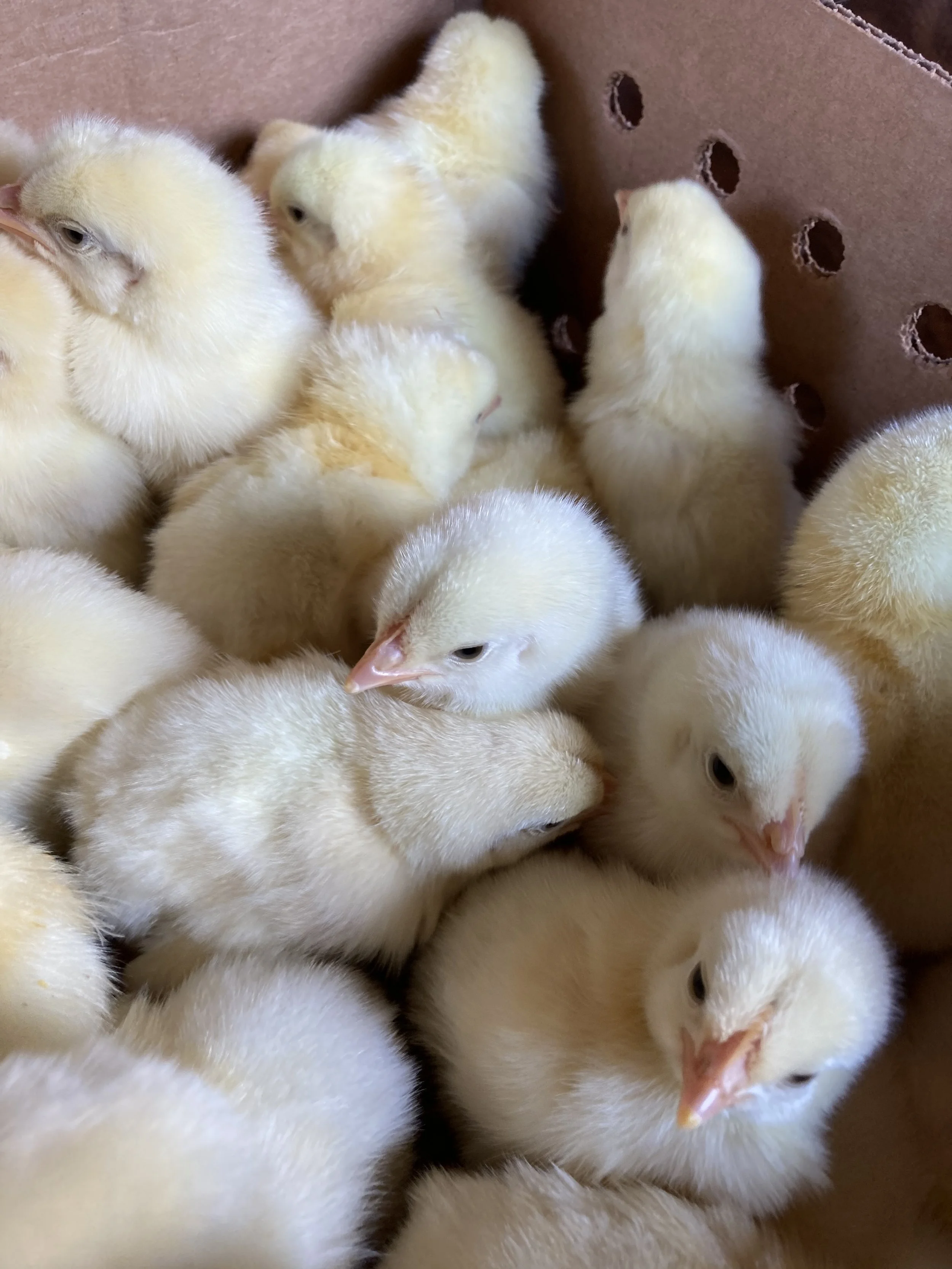When the post office calls and says that they have chicks for us, it is always an exciting day, but there is a lot of preparation that goes into getting ready for their arrival. In March Elizabeth had started a group of pullets (young female chickens who will one day be egg layers) in the brooder house so she needed to move them out. With the weather getting warmer, she decided to move them into an extra field pen and move them around our yard until they were big enough to join her flock in the “eggmobile.” After that she needed to clean out the brooder house, put down fresh shavings, set up the large brooders, and finally put out waterers and feed.
You might be wondering how chicks can be shipped in the mail and survive for two days with no care. The hatching of a chick out of an egg is a remarkable process. When a chick hatches, not all of the nutritious yolk material in the yolk sac has been used up. What remains is drawn into the chick’s abdomen and absorbed by the chick’s body during its first days of life. Incredibly each chick enters the world with a built-in food supply that can sustain it for up to three days after it hatches.
We’ve been doing this for many years so we know the hatchery’s shipping procedure and the post office schedule so we are anticipating that the phone will ring with news of chicks at the post office. It’s pretty predictable that the postal employee will tell us that the chicks are annoyingly loud, and they are relieved that we are taking them out of their office. We load them up in the back of the vehicle and head for home.
After carrying the boxes into the brooder house, we carefully unwrap the boxes and dispose of the packing tape. We learned that lesson the hard way after we had chicks get tangled in the tape one year. There are 100 chicks in each box which is divided into four sections to prevent the chicks from piling during shipment and smothering. It’s always fun to open the boxes and see those little fluffy balls chirping away.
Our brooder house is divided into two sections because chicks do better in smaller groups and there is less competition for food and water. The first day the feed is placed on papers to help the chicks find it quicker, and smaller waterers are used to prevent drowning. Regular feeders are added the second day and regular waterers are added within the week.
It is amazing to watch them running, eating, and drinking within seconds of being taken out of the box! They will need a room temperature of about 70 and a brooder of about 95 for the first week. After that we begin to slowly turn down the temperatures and “harden off” the chicks so they are ready go out onto pasture at 3 weeks.
We made a short video about the arrival of chicks to our farm. We hope you and your family enjoy it. If you have not placed your order for chickens, click on the button below and order today.




